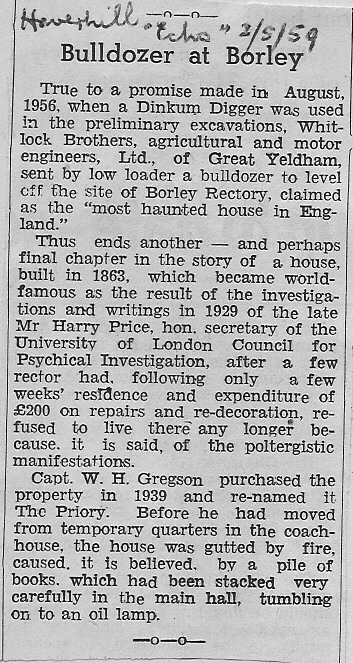
The following notes are contained inside the personal copy of MHH, originally owned by Iris Owen. This first edition was later given to Vincent O'Neil.
1. Echo. Haverhill, 2/5/59. "Bulldozer at Borley." Pasted inside front cover.

2. Unidentified clipping pasted inside front cover describing remnants for sale. "1,000 ton firewood logs. . . " Note: Entirely demolished by September 1946.
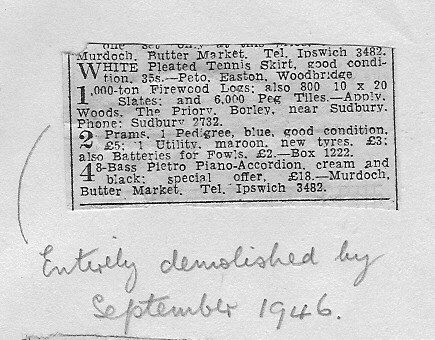
3. Unidentified clipping pasted inside front cover. Probably from Echo. Haverhill, September 1959. [Compare bottom art with #1]
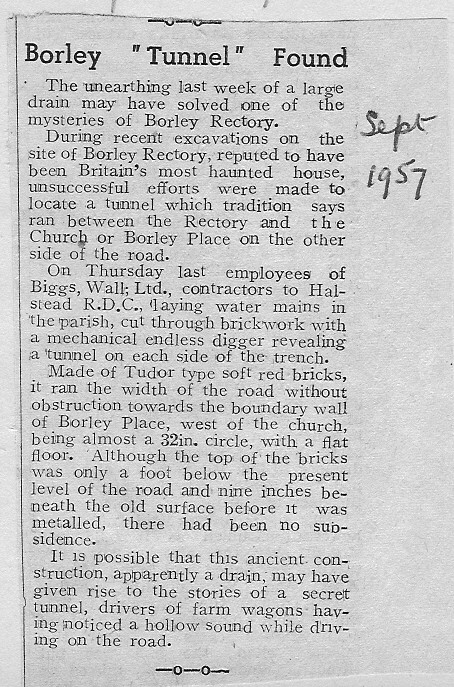
4. Page 5. Original text: "Mr. Smith and the sexton reverently buried [the skull found by Mrs. Smith in the library cupboard] in the churchyard in the presence of the churchwarden and the widow of the previous rector." Note: For a previous effect of doing this, see page 20 of second book. The skull should not have been buried or removed. Page 20 of EBR reads, "According to Mr Hardy, a foreman painter at Borley, the skull 'had been lying about the house for a long time. Once it was buried, but the phenomena increased to such an extent that it was restored to the rectory.'"
5. Page 12. Original text explains how Simon of Sudbury was dragged from the Tower of London and beheaded June 14, 1381. "A suggestion has been made that Simon still haunts Borley and the neighborhood." Note: Skull in Saint Gregory's Chruch, Sudbury.
6. Page 13. Original text traces roots of Waldegrave family. Note: Also of Navestock, Ongar and Chewton, Som.
7. Page 26. Referring to courtyard photo, facing page. Note: X This landing window was later bricked up but nobody mentions it. See Plate XV, EBR. Note: No. It's the passage wall showing through after the fire. [First observation seems most correct.]
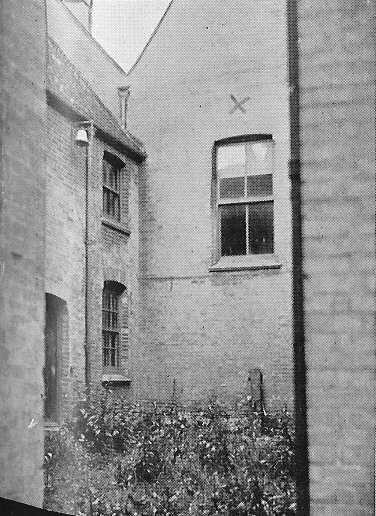
The bricked courtyard of the Rectory. MHH |
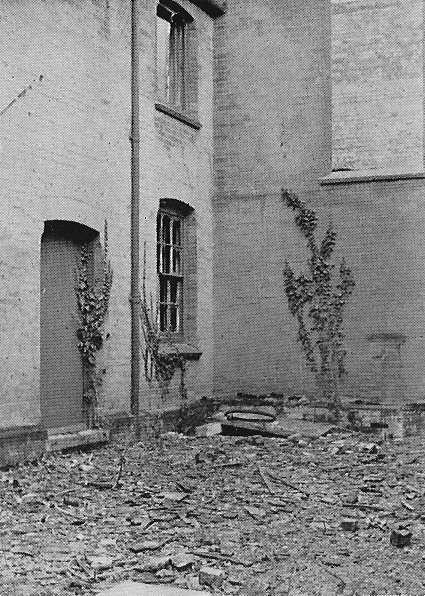
The Rectory courtyard, showing stone slabs (left foreground) covering the soft-water well. EBR |
8. Page 56. Original text describes path used by Mr. Cartwright. ". . . he had contracted to do some repair work to farm buildings at a farm between Borley and Clare. He used to walk to his work every morning, and the shortest cut was through Borley, past the Rectory." Note: The Rectory would be well off the most direct way.
9. Page 74. Original text: "Mrs. Foyster is said to come from a 'psychic' family." Note: No!
10. Page 74. Underlined sentence in original text, "Consequently, I did not again visit the Rectory during Mr. Foyster's occupation [after October 1931 visit]."
11. Page 146. Original text describes the sixth wall writing, "Edwin." Note: Dom Richard's real name.
12. Page 147. Original text is reproduction of wall writing, "Get light, mass, prayers." Note: "Mass by Boy." Dom Richard (Edwin) Whitehouse was nicknamed Boy as a child and young man.
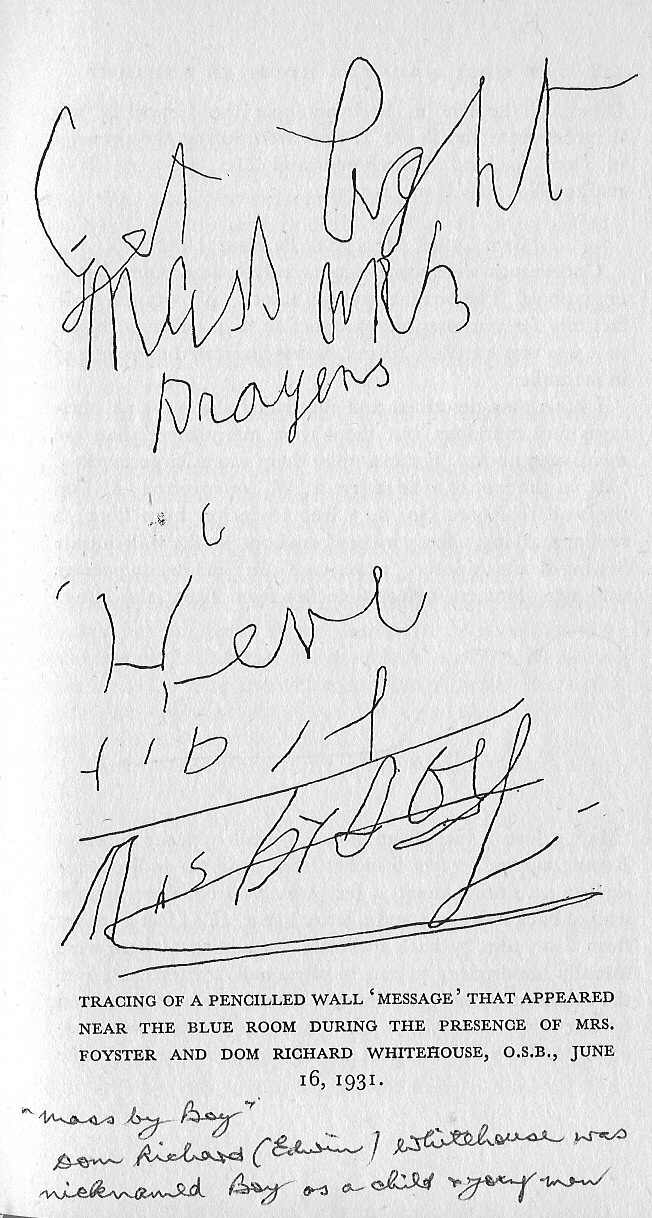
13. Chapter XXVI. Various sentences by the planchette transcipts are marked with x's, but with no comments.
14. Page 206. Original text details observations during Price tenancy. "A piece of rotten wood, like touch-wood, was found on the hearth of the Sewing Room at 9:45 a.m. on July 18 [1937]. It was roughly three feet square." Note: Glanville says 3 inches square.
17. Page 207. Original text details observations during Price tenancy. Word inserted into original text. "[Kerr-Pearse] cleared out the [well] in the cellar passage, and found that it was very shallow. . . "
16. Page 207. Original text details observations during Price tenancy. "It is possible to enter the cellar from the courtyard via this tank [water well]." Note: Not this one, which was in cellar passage.
17. Page 236. Original text describes lights in various windows. "The light was also seen by our man Herbert Mayes on the same night at a different window, the large one on the stairs." Note: underlines last six words. Later bricked up. See Plate XV, EBR. See note 7.